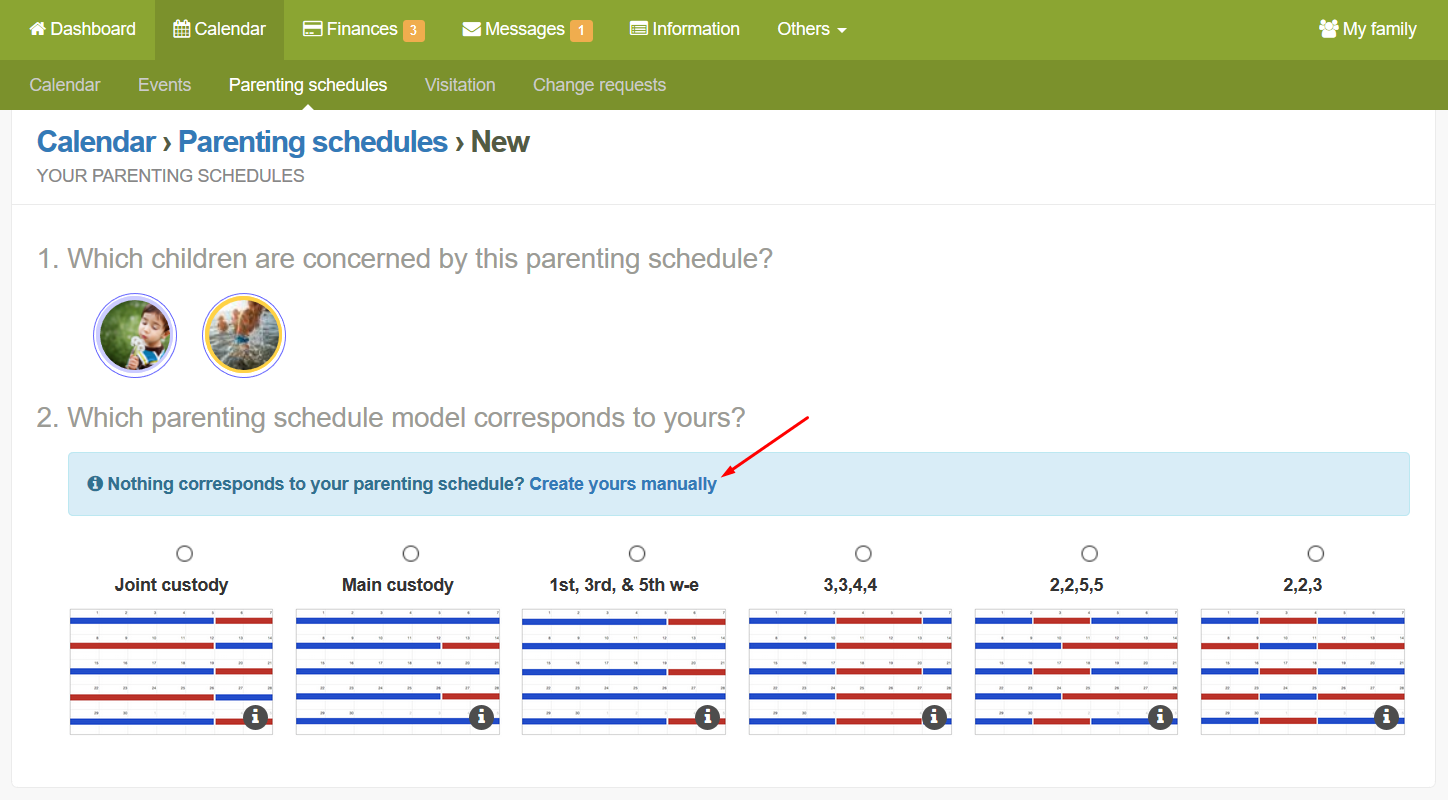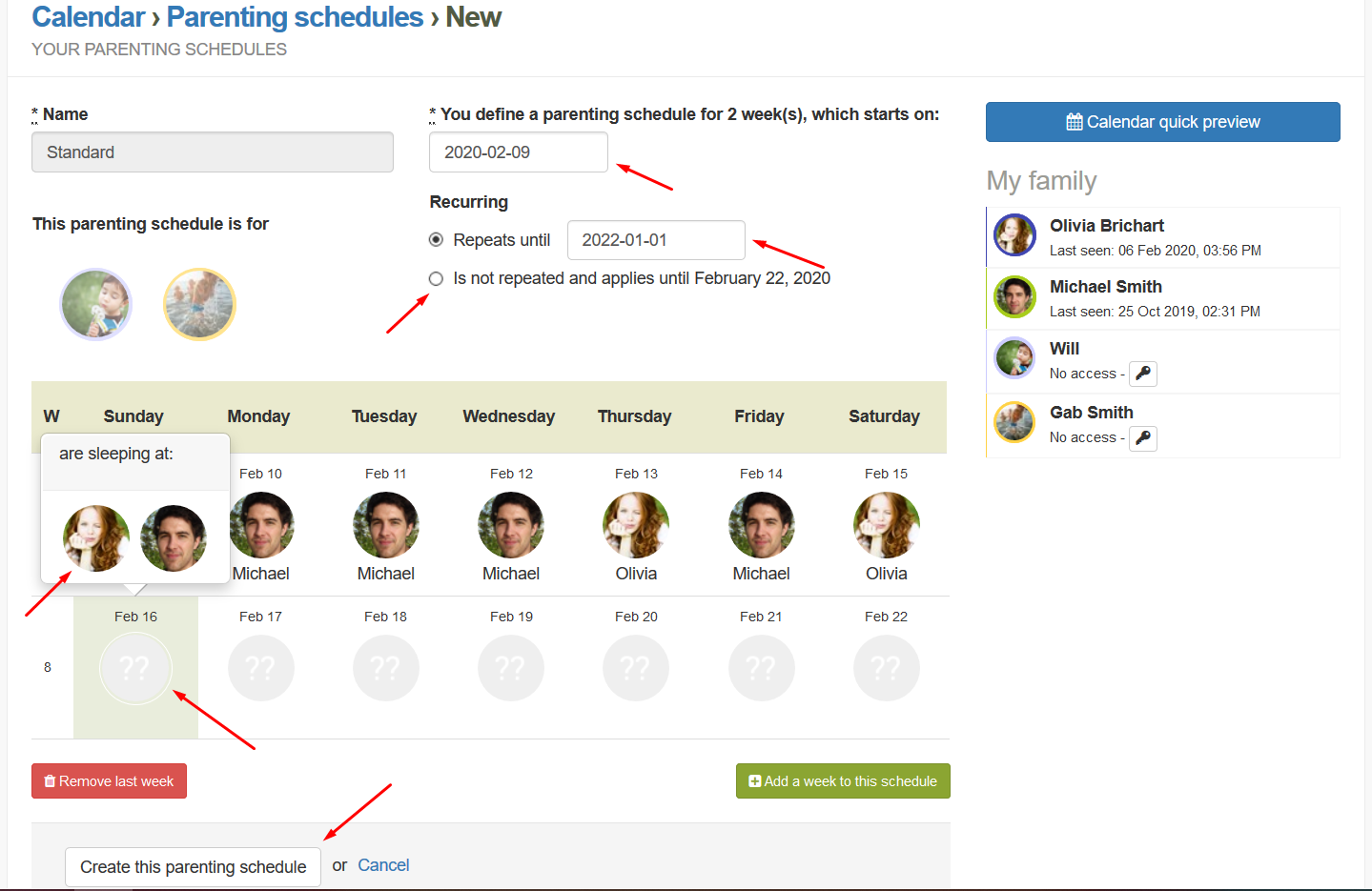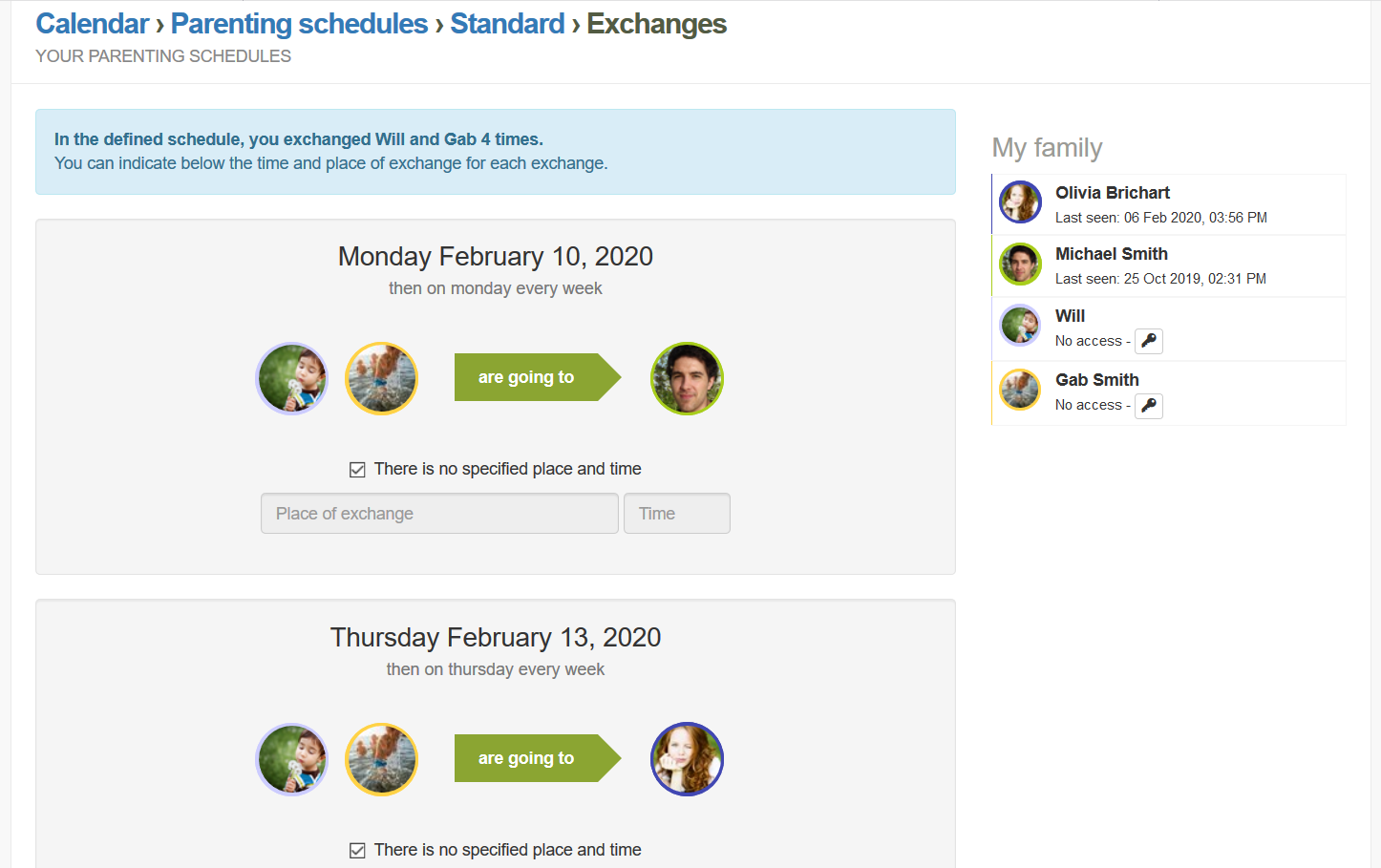It might not be easy to establish a healthy co-parenting relationship, but it’s worth it.
Learning how to move past your individual differences to create an environment that helps your children thrive is essential to their development. When joint custody works well, it can help children feel stability, security, and adoration at a time when they need it the most.
One of the pillars of successful co-parenting? Clear and consistent communication.
While it might be easiest to steer clear of your ex-spouse and avoid contact altogether, there will be many important conversations you’ll need to have over the course of your child’s life. It’s easier if you can work through these issues as a team, rather than pinning one parent against the other. Today, we’re sharing why co-parenting communication is important and how you can navigate it together.
Ready to learn more? Let’s get started!
1. Discuss Important Decisions
Maybe you’re in the early stages of parenthood, navigating diapers and preschool. Perhaps you’re in the throes of adolescence, dealing with driving privileges, dating and college applications. Or, you could be anywhere in between.
Either way, there are major decisions at every age that you’ll need to navigate alongside your ex-spouse.
When one ex refuses to communicate with the other, it can lead to one parent making all of the important decisions on their own. Then, this can lead to feelings of resentment down the road, from all parties. To avoid this clash, it’s wise to set aside your differences as much as possible and focus on your children’s needs.
The decisions might start out small and insignificant at first but as your children grow, they will take on more significance. Thus, it’s important to set a communication standard as early as possible.
2. Help Children Feel Secure
Especially in the weeks and months directly following a divorce, your children will be in a state of upheaval. Even if they remain in the family home with one parent, there will be a major disruption to their routine and their sense of normalcy will be shaken.
While you might not be able to schedule family dinners and vacations with your ex-spouse, it can benefit your children to see you speak calmly and openly to one another. This way, any sense of a major rift or fight is dissolved, and they can begin to understand that divorce doesn’t have to mean a terrible change. Rather, it can mark a healthy and beneficial shift in their family dynamics that still leave them feeling loved and cherished by both of you.
This confidence and assurance can help them adjust better and more quickly to the divorce, which can improve their self-esteem. This is an especially important step to take if your children are school-aged, as this is the stage when children begin to analyze their role in your relationship, feeling guilty and wondering if they did anything to cause your split.
You can reassure them privately over and over again that this isn’t the case, but actions speak louder than words.
3. Establish Consistency
“But mom lets me drink chocolate milk before bed!” “But dad lets me stay out past 11:00 with my friends!”
Divorced parents at every stage hear the comparisons all the time. It’s not easy being pinned against your ex-spouse, especially if you’re playing the endless, tiring game of trying to “beat” one other. Instead of seeking to one-up each other and shower your children with privileges you know they don’t get when they’re not in your custody, it’s best to be on the same page.
Playing the cat-and-mouse game when they’re young leads to manipulation when they’re older. Communicating with your spouse helps you set common, shared ground rules that the kids can expect at all times, no matter where they’re spending the night.
From bedtimes and dietary decisions to friend circles and curfews, there are myriad important rules you’ll need to set as your brood grows, and it’s wisest to set them together.
4. Set an Example of Open Communication
Your children are watching your every move, even if you don’t realize it. If you hold a grudge and give your spouse the silent treatment (or receive it), what does that tell them about working through their differences?
You want your children to feel comfortable coming to you and opening up about the issues they’re facing in their lives. This step only gets more difficult as they get older. Any parent, divorced or not, knows that asking a moody teenager about his day is no easy feat!
Set a precedent early on that your family talks through things, even the hard ones. No one has to suffer in silence or internalize feelings because your space if a safe one. They’ll be more willing to follow through on their end if you and your spouse follow through on yours.
5. Coordinate Schedules
What happens if you have a custody plan worked out but one spouse wants to take the kids on an extended summer vacation that cuts into your time with them? Or, what if you have a spur-of-the-moment business trip that will affect your ability to keep the children?
From school schedules to sports practices, family obligations, and more, there are many instances that might require a slight tweak in your plans.
While it’s best to stick to pre-arranged custody terms, there might be instances in which a change is required. It’s reassuring to know that if this happens, you can bring the issue up with your spouse and you’ll work together to create a workaround.
If you aren’t on speaking terms with one another, even the slightest scheduling conflict can turn into a major argument that leads to even bigger problems. This is especially the case during holidays, at a time when families on both sides might want to see the kids. Communication and efficient scheduling go hand-in-hand.
The good news? You don’t have to have an hour-long phone conversation to set and stick to your schedule. Today, there are online scheduling tools that you can both access to share and synchronize your plans.
6. Reduce Tension at Shared Events
Despite your best efforts, you’ll be unable to avoid your ex-spouse completely if you share children. There are many events you’ll likely want to attend together, from parent-teacher conferences to dance recitals and high school graduation.
While you could coordinate ahead of time to be present but on separate terms, it’s infinitely easier (and more enjoyable for the kids), when you can attend side by side. Attending school meetings, sports events, and other milestones together reveals that you’re willing to work past your differences for the sake of your children.
7. Stick to On-Topic Dialogues
One of the facets of clear communication is being able to stay on topic without deviating into outside, off-subject territory. The more that you and your ex-spouse communicate, the better you’ll get at it. Over time, this means you’ll be able to talk about your son’s ball schedule or your daughter’s sleepovers without bringing up past hurts.
At first, this might not be an easy step, and that’s OK. When the issues from the divorce are still fresh, any time that you speak to your spouse might feel like a fighting match. However, if you both make the dedicated effort to keep the dialogue concise and professional, you’ll find that it gets easier over time.
Deciding to work on this together is a mature and important step that can help you stay in the loop about your family’s life, and for that reason alone, it’s well worth the effort.
8. Stop Using Kids as Messengers
It might be tempting to turn your kids into tiny messengers, asking them to relay messages to your ex-spouse so you don’t have to approach that conversation yourself.
Yet, keep in mind that while that option might be convenient to you, it’s also incredibly unhealthy for them. If they’re feeling even a little bit caught in the middle, this approach strengthens that affirmation. Over time, this can cause them to feel torn between both parents, which can affect their identity, self-esteem, confidence and more.
Resist the urge to take the easy way out and play a game of telephone, funneling important information through your kids. Not only does this exacerbate their confusion but in a more practical sense, you can’t be sure that your original message made it all the way through unchanged! What began as “I’ll pick up the kids from school today” could translate to “You’ll get the kids from school today” and where does that leave them when the bell rings?
Navigating Your Co-Parenting Journey Together
Divorce doesn’t have to equal a breakdown in communication. While you might balk at the idea of working with your ex-spouse on a regular basis, keep in mind who suffers when you don’t.
Thankfully, there are resources available to help you communicate from afar if you’re unable or uncomfortable meeting in person.
Not only can resources help you and your spouse work through scheduling and finance issues, but also offer a simple messaging tool that allows you to share ideas, concerns, and comments in seconds.
Get started today and put the communication back in co-parenting.










